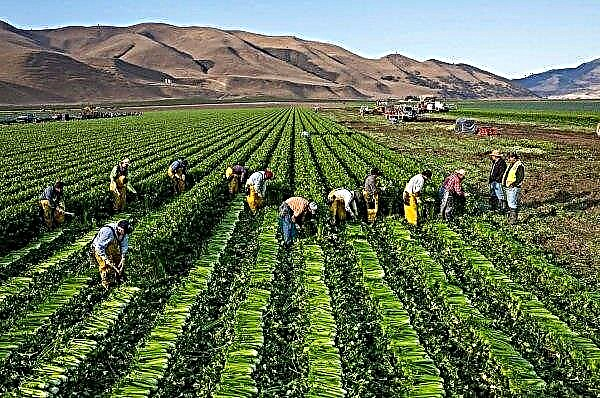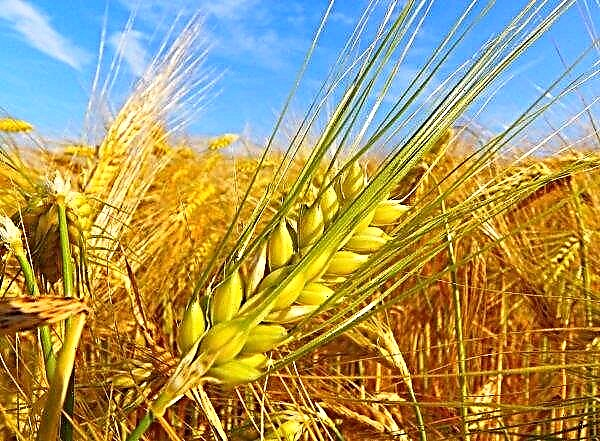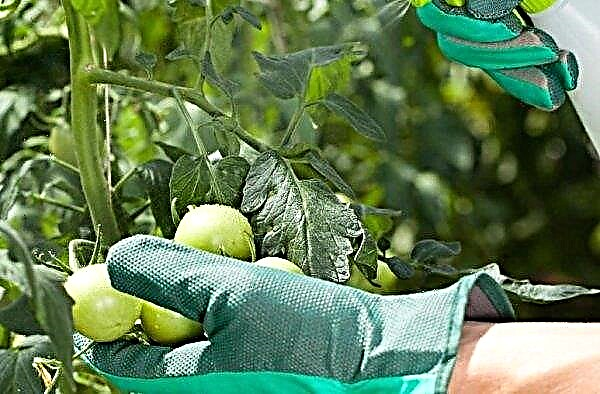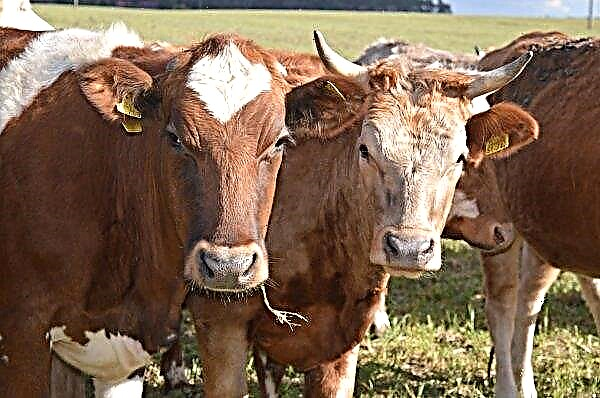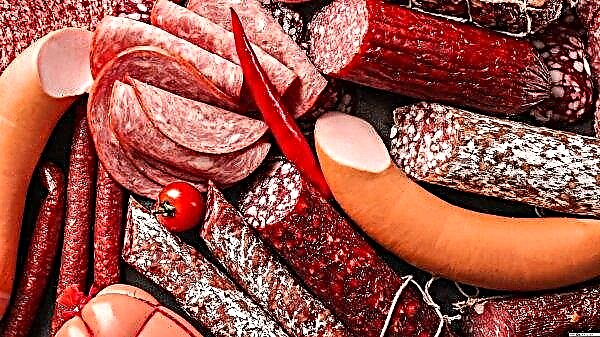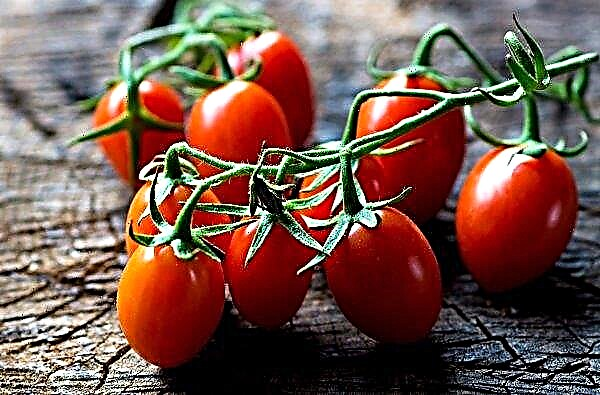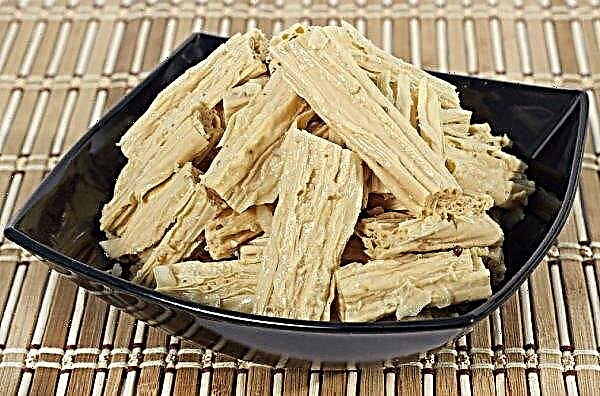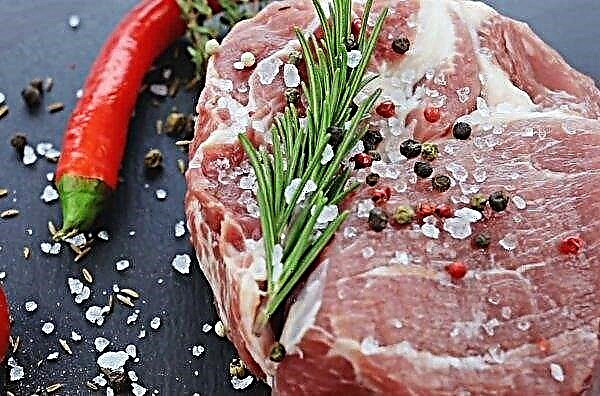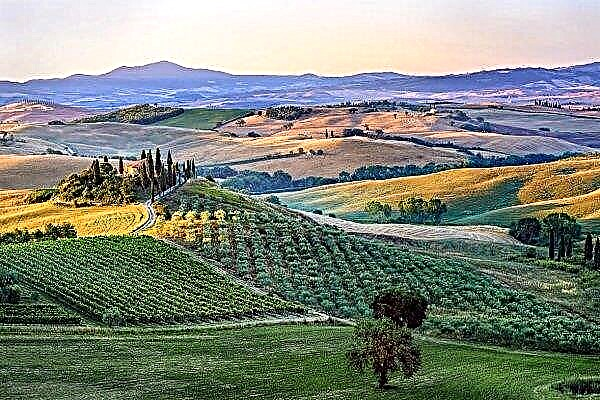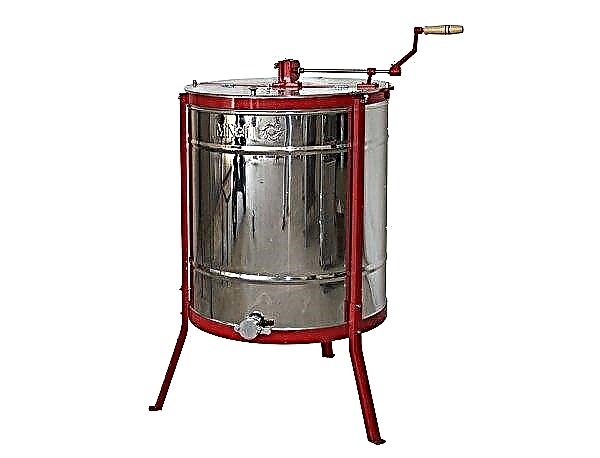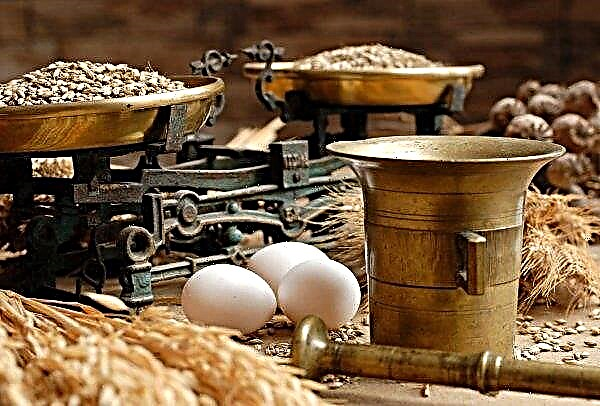In the line of dwarf decorative fir trees used in the field of landscape design, the coniferous perennial Glauka Globosa is of particular value and success. The plant is characterized by slow growth rates, unpretentious in growing, has an excellent ability to tolerate frost well. From the article you will learn what are the features of agricultural technology for the cultivation of conifers and how it is used in landscape design.
Botanical Description
Prickly spruce Glauka Globosa (Picea pungens Glauca Globosa) is a perennial evergreen dwarf shrub or tree with a height of not more than 1.5–2 m and a crown width of up to 3 m. The plant was bred by the seed method by the Dutch breeder Ant Kluis Boskupup in 1937. The variety entered mass sale in 1955.
The description of the culture is advisable to begin with its appearance. The tree belongs to the category of slow-growing plants, the growth of which per year is about 8 cm in height and 10 cm in width. By age 30, adult growth does not exceed two meters. At a young age, the spruce differs in a flattened spherical shape of the crown, later, after about 10 years of growth, an explicit central conductor forms on the culture, which begins to rapidly develop, stretching all the other shoots behind it. Thus, the loose spherical shape is converted to broad conical, becomes more dense and dense. The branches of the conifer are short, densely arranged to each other.
The needles of Glauka Globose are dense, very prickly, short. Needles have an unusual rounded shape resembling a tiny sickle. The needles have a very beautiful silver-blue color. In young shoots, its shade is lighter. Due to this property, in spring, the spruce acts as a neat bluish ball, which darkens with each new month and becomes dark blue by the fall.Important! To preserve the original wide-conical shape, landscape designers consciously cut the elongated shoots, which allows you to create an asymmetrical, elegant spruce.
The fruits of the spruce are oval-cylindrical cones, up to 10 cm long, with a light brown color. Inside them are small black seeds 3-4 mm with a light brown wing. Cones ripen in the first year, then they fall.
Landing
Dwarf prickly spruce of the described variety is not very demanding on environmental conditions: it has excellent winter hardiness, quite drought-resistant. However, in order to grow a healthy, aesthetically attractive specimen of spruce, experts advise to pay maximum attention to planting activities.
Did you know? Spruce wood is an ideal raw material for making musical instruments. Due to the fact that the fibers in it are evenly distributed, the instruments have a very thin, clean and excellent sound.
Glauka Globosa is a photophilous tree that is recommended to be planted in well-lit, spacious and open areas, protected from drafts and cold winds. The plant is able to grow in partial shade, but the color of the needles may lose its saturation. Spruce perfectly grows and develops on light, nutritious, air- and moisture-permeable soils with medium or low acidity.

It responds well to loam or sandstone. The culture can grow on clay heavy soils, but for this you need to organize high-quality drainage. It is important when planting to take into account that perennial negatively tolerates earth compaction and excessive moisture. These factors can provoke rotting of the root system and, as a result, lead to the death of the culture.
Landing work is recommended to be carried out between the end of April and the end of June. For cultivation, a young seedling of 3–6 years old with a closed root system is chosen. Planting material should have “live”, green needles, dense, elastic and elastic shoots of saturated color. It is better to buy seedlings in specialized markets or nurseries that cultivate plants.
The technology for planting spruce is traditional and is based on the following steps:
- dig a recess, the size of which is 2-3 times the size of the root system;
- mix part of the removed soil with turf, leafy soil, sand and peat in a ratio of 2: 2: 1: 1. Add 100 g nitroammofoski to the mixture;
- at the bottom of the recess, organize a drainage layer using broken brick, pebbles or expanded clay;
- pour a layer of fertile soil onto the drainage layer of 15–20 cm;
- put a seedling in a hole, carefully spread the root processes;
- fill the plant with earth so that the neck of the root remains on the surface;
- tamp the soil with your hands a little, pour plenty of water with settled water, based on one plant about 40-50 l;
- Cover the trunk circle with a layer of mulch, using bark or peat.

Spruce care
It is not difficult to take care of Glauka Globosa spruce, however, in the first year of its growth, you should strictly adhere to the basic agrotechnical rules regarding dosages, irrigation schemes and fertilizing.
Watering and feeding
The root system of a young seedling is quite compact and is not able to fully consume moisture and nutrients from the soil. Therefore, the plant needs to organize regular hydration, which in the first year of growth is carried out 2-3 times a week, focusing on drying of the upper soil layer. Do not allow prolonged drying of the earth, otherwise the plant will not be able to take root. It is especially important to provide the culture with a sufficient level of moisture in the hot summer period. At this time, the bush is watered every other day, using 10-12 liters of water.
Spruce is fertilized twice a season. The first portion of nutrients is introduced in spring. To do this, use complex mineral fertilizers specially designed for conifers, or nitroammophoska at the rate of 30–40 g per 1 m². During the autumn feeding, spruce and potassium-based products are used to eat spruce, which strengthen the immune system and increase the resistance of the culture to pests and ailments.
Loosening and mulching
In order to ensure full development of the conifer, soil loosening and mulching are carried out. The spruce trunk circle is covered with a thick 20-cm layer of mulch, which is used as peat, loose compost or pine bark. Such a procedure allows you to save moisture in the soil, less often to irrigate and protect the root processes of the young plant from freezing in the winter.
Loosening is carried out shallow, approximately 5-7 cm after each watering. The procedure allows to enrich the soil with oxygen and nutrients, thereby activating the development of spruce root roots.
Pruning
Glauka Globosa responds well to a haircut. When using a conifer in the field of landscape design, forming trimming is carried out, removing branches protruding from the general shape or thickening the crown. As a rule, the procedure is carried out in the last weeks of May - the first days of June, when the period of active movement of the juice ends at the bush.
Every spring, sanitary circumcision is done, during which dry, damaged, too thin, broken and diseased shoots are removed.
Important! During the growth of the conifer, one can notice the formation of a strongly growing, powerful shoot located near the apex. It is important to remove a competing branch to prevent the formation of a bifurcated trunk.
Winter preparations
Spruce of the described variety is characterized by excellent winter hardiness and is able to withstand temperatures up to -30 ° C without shelter. In order to protect young seedlings from freezing of root processes in the first year of growth, experts advise covering them for the winter with spruce branches.
At the beginning of spring, it is necessary to ensure that snow or ice does not accumulate on the surface of the needles, since this can provoke yellowing of the needle foliage and their further decline.
Possible diseases and pests
Glauca Globosa boasts strong, persistent immunity, thanks to which perennials rarely become victims of pests or diseases. Under adverse climate conditions, in particular, high waterlogging or poor care, the bush is affected by fungal ailments:
- shute brown;
- Fusarium

When plants are infected with the above diseases, they are sprayed with fungicidal preparations: Topsin, Ordan, Fundazol.
Of the pests, the most dangerous for perennials are:
- red and yellow gall aphids;
- spider mite;
- spruce aphid;
- leaflet.

When the first signs of parasites appear, they process the spruce at intervals of 7–10 days with insecticides, for example, Aktara, Confidor. To prevent infection of the plant and the appearance of insect pests in early spring, do preventive spraying using a 1% solution of Bordeaux fluid.
In addition, as a prevention, experts recommend:
- regularly loosen the soil and destroy weeds on the site;
- control the degree of moisture in the soil, prevent excessive moisture;
- when applying top dressing, strictly observe the dosage;
- spray the bush with insecticidal and fungicidal preparations.

Breeding methods
Breeding spruce of the described variety is not an easy task. As a rule, they are engaged in similar activities in professional nurseries, whose employees have the proper knowledge, experience and skills. Propagating the plant at home is real, but you need to be prepared for the fact that the initial attempts will be futile. For breeding, three methods are used: vaccination, seed and cuttings.
Did you know? In Sweden, grows the oldest spruce in the world - Old Tikko. Her age is about 9,500 years.
Seed propagation
Reproduction of spruce seed way is quite difficult, but with the strict implementation of the basic rules can contribute to the emergence of a new specimen, characterized by strong immunity, a long period of life, better resistance to adverse environmental conditions.
Dilution by seeds is carried out as follows:
- Collection of material. Seeds are harvested in autumn from cones ripened in the first year of plant growth. They are collected, placed in a warm place and left for several days. As soon as the cones dry out, grains are taken out of them.
- Training. After collection, the material is treated with a disinfectant solution, for example, a weak solution of potassium permanganate, and then stratified for 1-2 months.
- Sowing. Sowing work is carried out in the spring. For this, grains are taken out of a cold place and dried. Sow seeds in a container with a specially prepared substrate consisting of peat fertilized by any means for conifers. The seed material is placed in the soil to a depth of 2 cm, covered with a plastic film to create a greenhouse effect.
- Care. After sowing, plantings are provided with proper care, which consists in regularly moistening the soil and airing the seed material. When sprouts appear, the conventional greenhouse is removed.

In the open soil, the seedling is transplanted upon reaching the age of three. Over the next 4 years, the plant is grown, providing it with high-quality watering and top dressing. At the age of seven, spruce is transplanted to a permanent habitat.
Propagation by cuttings
If the seed method of breeding conifers is practiced by amateur gardeners, then cutting can only be done by professionals. To obtain a new specimen, select parts of the shoots of an adult culture: cuttings with a small piece of bark up to 10 cm long are cut off from an eight-year-old plant.
Further:
- cut cuttings are placed in any growth stimulator;
- prepare a substrate from identical parts of sand, peat and perlite;
- cuttings are immersed in the soil at an angle, the soil is moistened;
- the container is covered with a film and placed in a warm, slightly shaded place.
Video: Growing a blue spruce with cuttings at home
When the cuttings form the root shoots, after a year they are planted in the greenhouse, where they will grow for another 4 years.
To seedlings are well rooted, it is very important to maintain comfortable conditions for them:
- sufficient humidity;
- good lighting;
- regular loosening of the soil.
The use of wood in landscape design
Dwarf spruce Glauka Globosa - one of the most popular varieties of conifers that are used in the design of landscapes, gardens, gardens and parks. Its main advantage is that the culture is characterized by high resistance to gas pollution, which makes it possible to use urban gardens, parks, alleys for landscaping.
Globose is considered ideal for creating small, neat compositions of stones, other conifers, as well as for growing in containers, on balconies. The plant is great for solitary solitary plantings or group plantings. It is often used for planting on ground grass or near houses. Separate praise deserves the perennial in the stem, which, thanks to the original spherical shape and rich blue color, is appropriate in any corner of the park, garden or summer cottage. Spruce Glauka Globosa is one of the best dwarf perennials, which impresses with its magnificent aesthetic qualities, unpretentiousness in cultivation, excellent immunity and the ability to quickly adapt to a new place. Performing the basic techniques of agricultural technology, even a beginner gardener will be able to grow in his area a many-sided conifer, pleasing to the eye with high decorativeness.
Spruce Glauka Globosa is one of the best dwarf perennials, which impresses with its magnificent aesthetic qualities, unpretentiousness in cultivation, excellent immunity and the ability to quickly adapt to a new place. Performing the basic techniques of agricultural technology, even a beginner gardener will be able to grow in his area a many-sided conifer, pleasing to the eye with high decorativeness.

